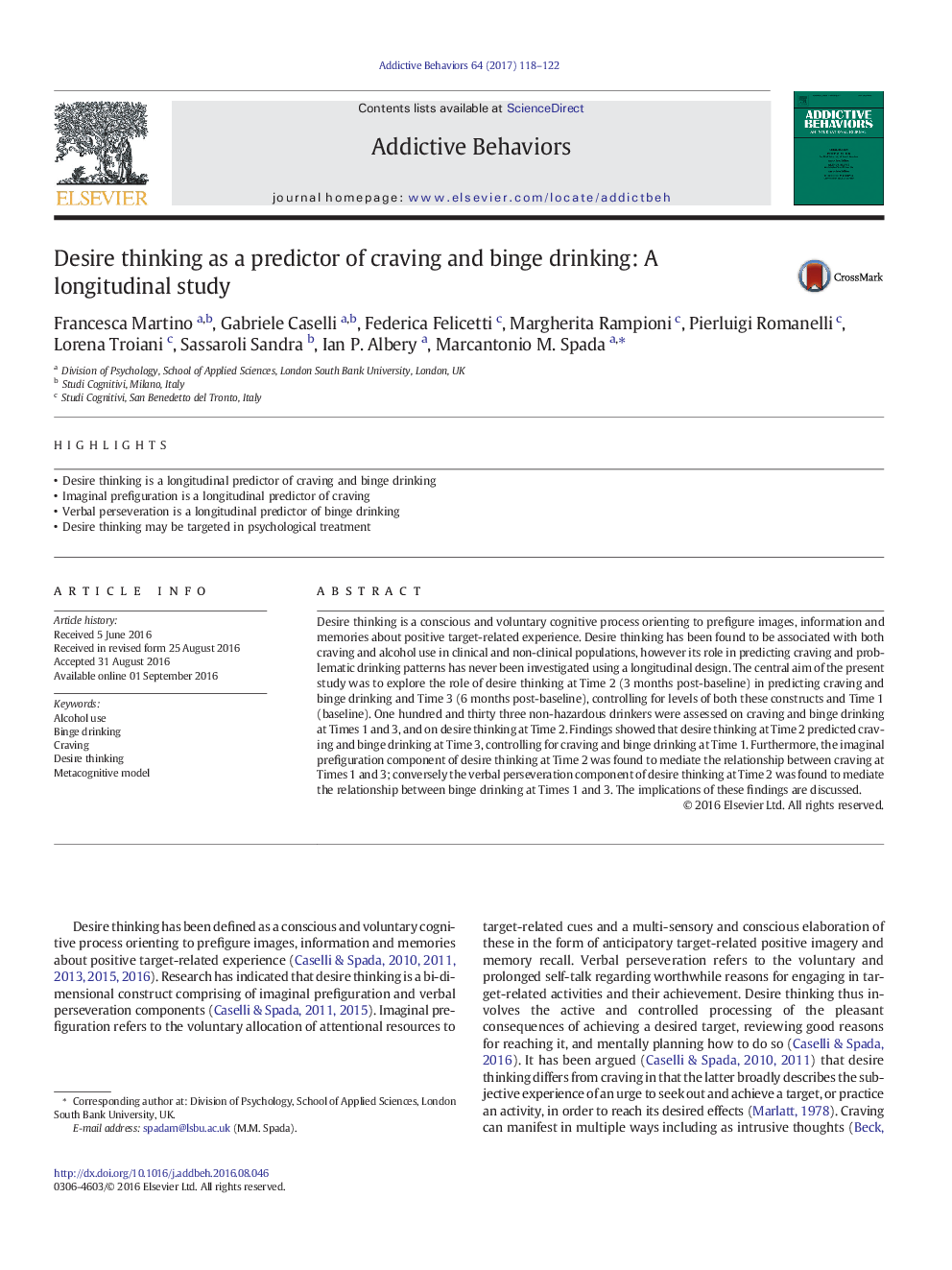ترجمه فارسی عنوان مقاله
میل به فکر کردن به عنوان پیش بینی کننده اشتیاق و نوشیدن غذا: یک مطالعه طولی
عنوان انگلیسی
Desire thinking as a predictor of craving and binge drinking: A longitudinal study
| کد مقاله | سال انتشار | تعداد صفحات مقاله انگلیسی |
|---|---|---|
| 148466 | 2017 | 5 صفحه PDF |
منبع

Publisher : Elsevier - Science Direct (الزویر - ساینس دایرکت)
Journal : Addictive Behaviors, Volume 64, January 2017, Pages 118-122
ترجمه کلمات کلیدی
مصرف الکل، زیاده روی در نوشیدن، میل شدید به، تمایل به تفکر، مدل فراشناختی،
کلمات کلیدی انگلیسی
Alcohol use; Binge drinking; Craving; Desire thinking; Metacognitive model;

